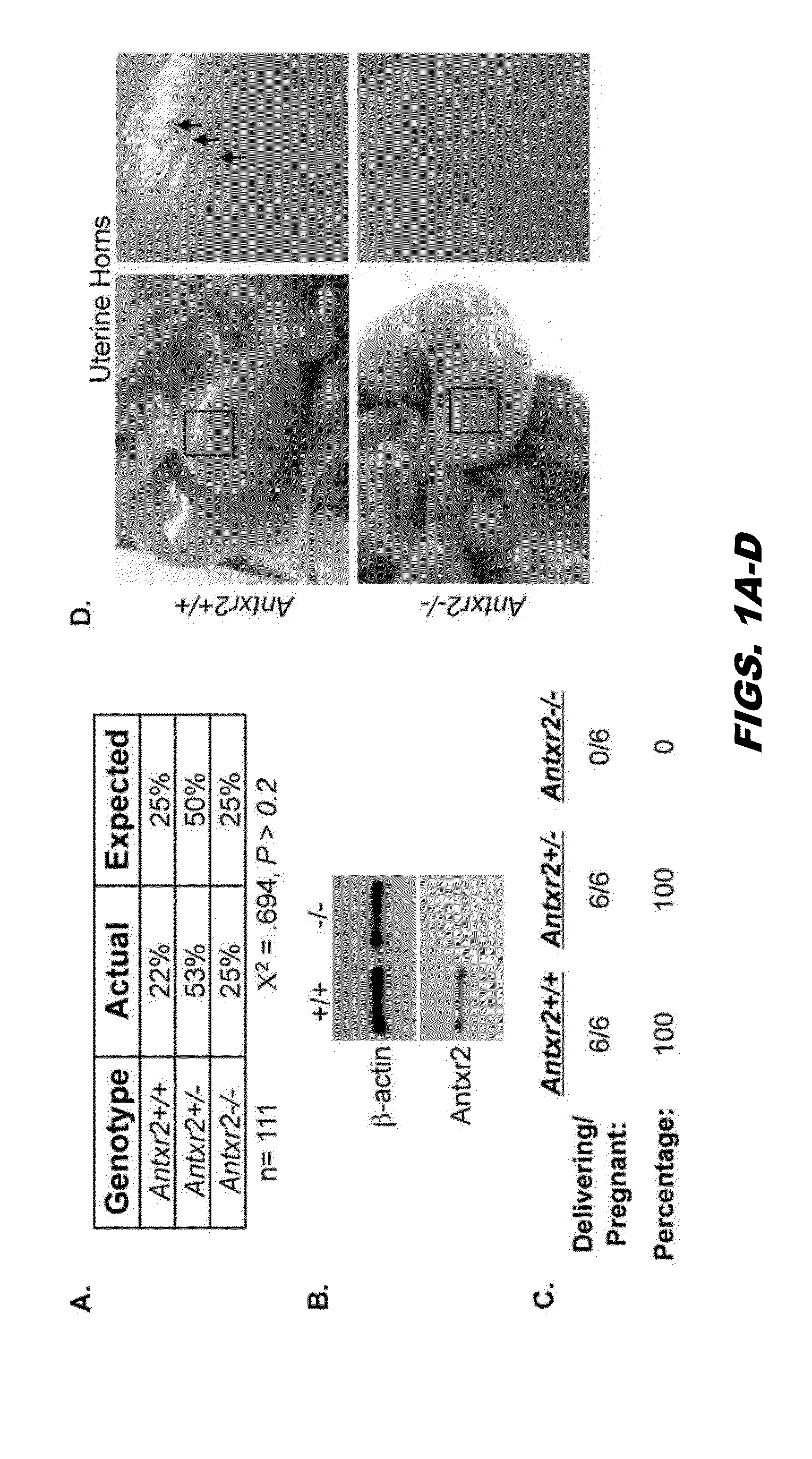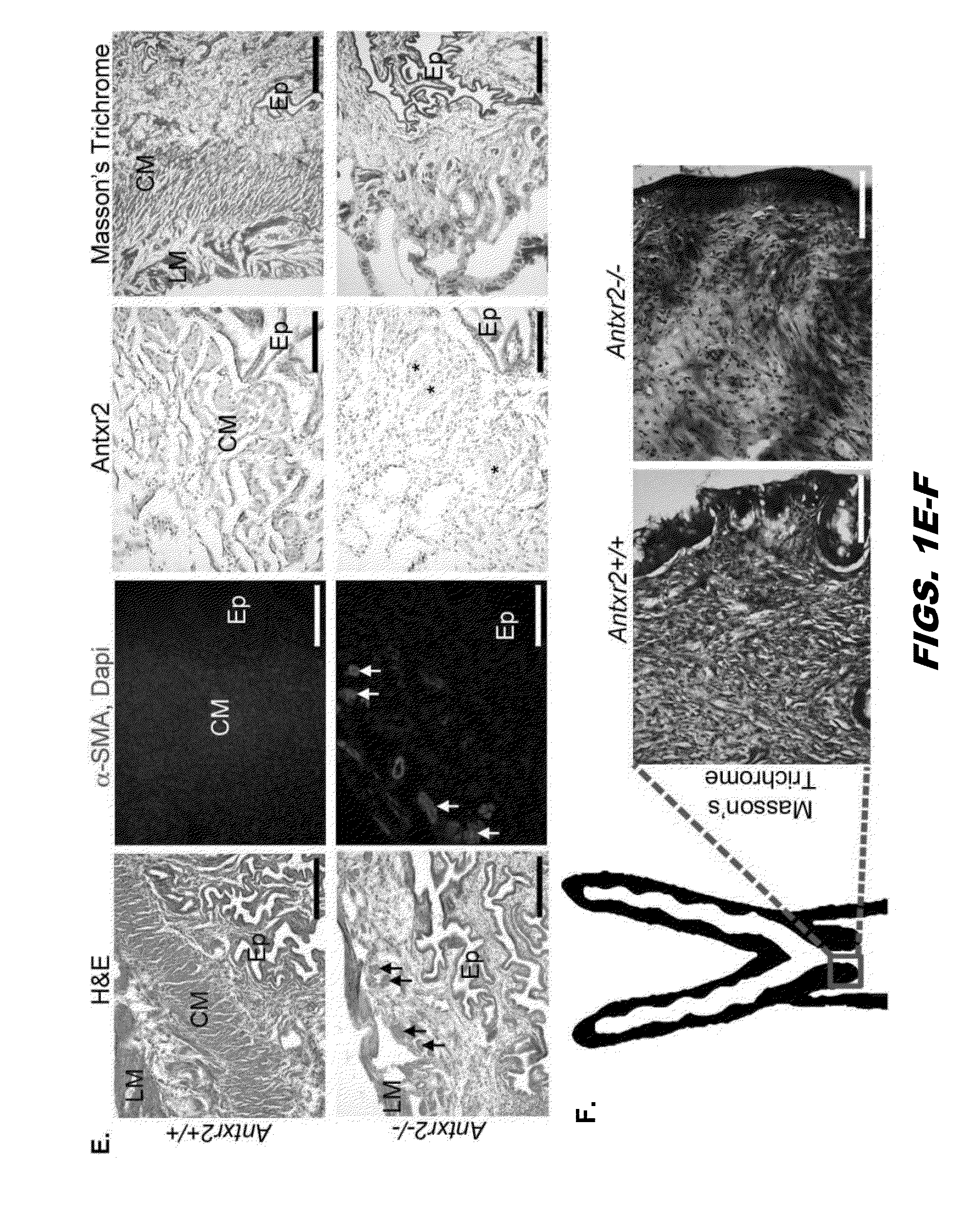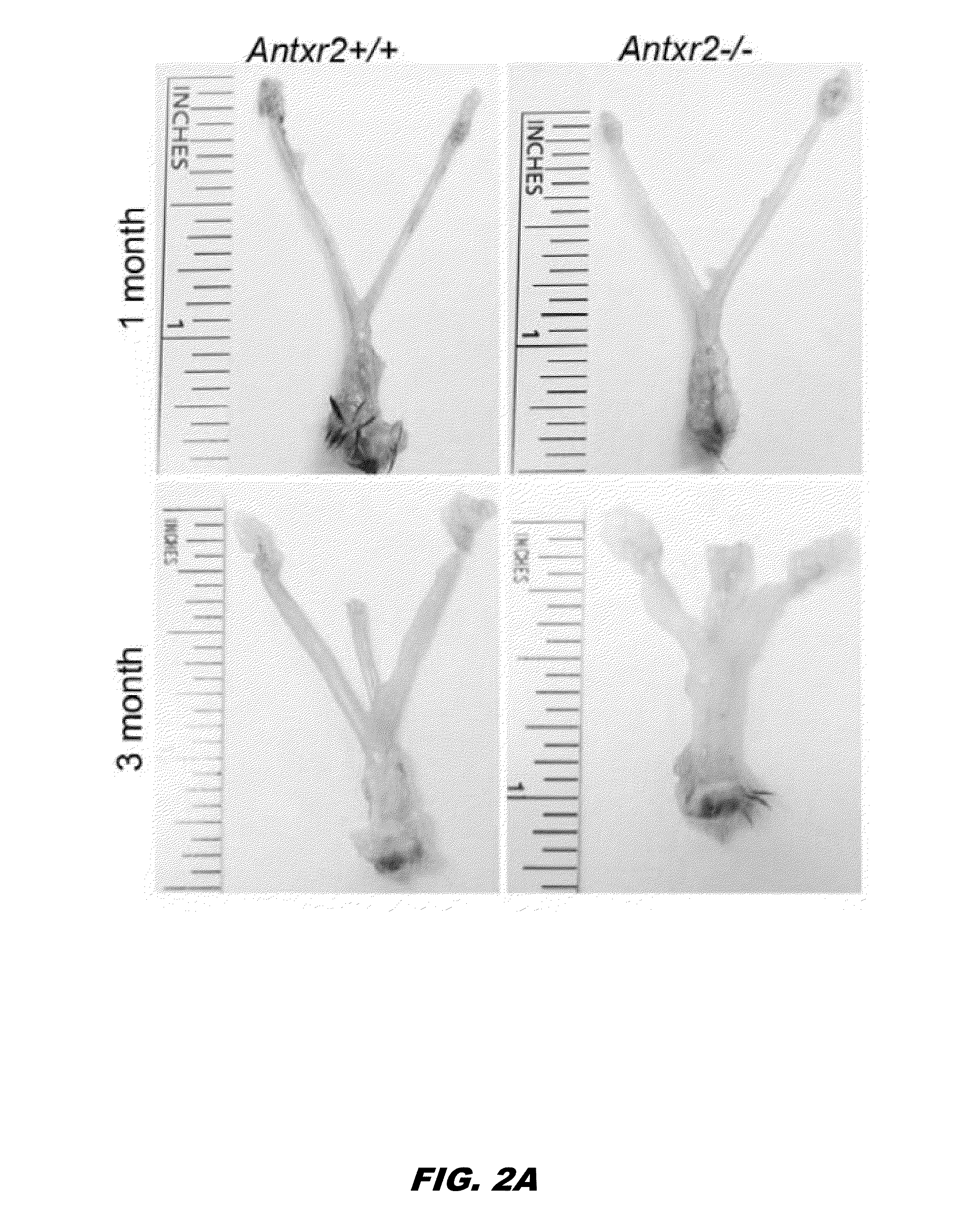Fusion polypeptides and methods of use thereof
a polypeptide and polypeptide technology, applied in the field of fusion polypeptides, can solve the problems of increasing the chance of tumor initiation, unstable polypeptides, short biological half-lives, etc., and achieve the effects of increasing the biological half-life of polypeptides, and stabilizing polypeptides
- Summary
- Abstract
- Description
- Claims
- Application Information
AI Technical Summary
Benefits of technology
Problems solved by technology
Method used
Image
Examples
example 1
Anthrax Toxin Receptor 2 Functions in ECM Homeostasis of the Murine Reproductive Tract and Promotes MMP Activity
[0326]Anthrax Toxin Receptor proteins function as receptors for anthrax toxin, however physiological activity remains unclear. To evaluate the biological role of Antxr2, Antxr2− / − mice were generated. Antxr2− / − mice were viable, however Antxr2 is required for parturition in young females and for preserving fertility in older female mice. Histological analysis of the uterus and cervix revealed aberrant deposition of extracellular matrix proteins such as type I collagen, type VI collagen and fibronectin. A marked disruption of both the circular and longitudinal myometrial cell layers was evident in Antxr2− / − mice. These changes progressed as the mice aged, resulting in a thickened, collagen dense, acellular stroma and the disappearance of normal uterine architecture. To investigate the molecular mechanism underlying the uterine fibrosis, immunoblotting was performed for MMP2...
example 2
[0448]Mammographically dense breast tissue, which is characterized by increases in the extracellular matrix protein, collagen, is a risk factor for developing breast cancer. On the other hand, myoepithelial cells that surround mammary ducts and aveoli are thought to have a role in tumor and metastasis suppression due to the fact that they form a natural barrier between the luminal epithelial cells (the cells from which tumor form) and the surrounding environment. Myoepithelial cells also secrete proteins that limit cancer growth, invasiveness and blood vessel formation. Nevertheless, the role of both the extracellular matrix and myoepithelial cells during tumor progression remains poorly defined and warrants further investigation.
[0449]Utilizing mouse embryonic fibroblasts, a protein called Anthrax Toxin Receptor 2 (ANTXR2) has a role in remodeling extracellular matrix proteins, such as collagen, via interaction with a group of proteins called matrix metalloproteinases. Addressing w...
example 3
Human Fc (IgG1)-CTP (hFcCTP) Polypeptide
[0513]This example describes one embodiment of an isolated polypeptide described herein.
[0514]The CTP domain of the beta-subunit human chorionic gonadotropin (hCG) was fused in frame to the terminus of human Fc fragments, creating an hFcCTP polypeptide. An Fc fragment from IgG1 subtype was used.
[0515]Cloning.
[0516]The CTP domain was cloned using pBluescriptII-Fc plasmid (human IgG Fc) and the upstream sense primer (5′TAGAGATCCCTCGAGGGCGC3′) [SEQ ID NO: 38] and the downstream anti-sense primer (5′TCTCAGCGCCGGCGACCTTATTGTGGGAGGATCGGAGTGTCCGAGGGCCCCGG GAGTCGGGATGGGCTTGGAAGGCTAGGAGGAGGGGGCCTTTGAGGAAGAGGAG TCCTGGAAGCGTGGTGATCCTTTACCCG3″ [SEQ ID NO: 39]). The PCR product was ligated into pDrive cloning vector (Qiagen). The resultant clones were verified by diagnostic digests followed by nucleotide sequencing. The insert was then sub-cloned into pBluescriptII using Not I and Xho I restriction enzymes, and the resultant clones were verified by restric...
PUM
| Property | Measurement | Unit |
|---|---|---|
| temperatures | aaaaa | aaaaa |
| temperatures | aaaaa | aaaaa |
| temperatures | aaaaa | aaaaa |
Abstract
Description
Claims
Application Information
 Login to View More
Login to View More - R&D
- Intellectual Property
- Life Sciences
- Materials
- Tech Scout
- Unparalleled Data Quality
- Higher Quality Content
- 60% Fewer Hallucinations
Browse by: Latest US Patents, China's latest patents, Technical Efficacy Thesaurus, Application Domain, Technology Topic, Popular Technical Reports.
© 2025 PatSnap. All rights reserved.Legal|Privacy policy|Modern Slavery Act Transparency Statement|Sitemap|About US| Contact US: help@patsnap.com



